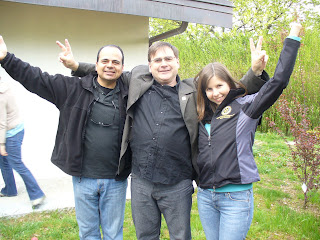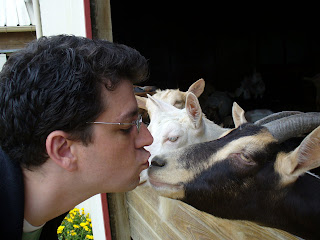The Rotary Group Study Exchange trip from Texas District 5840 to France District 1780 has come to a close. Our last few days were fun and a little more relaxed than the rest of the trip, other than the Rotary District Conference in Chambéry. Our group coordinator in France, the gracious Claude-France Godeau, introduced us to a huge roomful of French Rotarians and told everyone a little about our trip, including some of the fun photos we took. Our fearless team leader presented Claude with a Texas-shaped necklace as a symbol of our appreciation for all she has done throughout the trip.

Claude speaks at the Rotary District Conference in Chambéry about the GSE team’s eventful month of traveling in District 1780.
During the conference, in addition to our special GSE presentation, we offered an information booth about our trip and what the Group Study Exchange is all about. Many Rotarians are unaware of this wonderful program, so it was really great to share some of what we’ve learned and experienced because of it. The group also assisted one of the hosting clubs with their philanthropy fundraiser during the conference. That club was selling DVDs and promoting the wine of a local vineyard to raise money. After the district conference, many of the Rotarians gathered on a dinner boat in Aix-les-Bains, to wish the French District Governor, Charles Imbert, farewell and thank him for his year of service to Rotary.

The next day, the whole group had a cookout at the home of one of our host families. French-style barbecue, I must say, is excellent! But it’s not at all what we’re used to in Texas. No barbecue sauce and absolutely, positively NO eating with your fingers! There was, of course, lots of bread, cheese and wine.


I think I can speak for everyone in the group in saying that this has been a very exciting and informative adventure. We have all met some really, really wonderful and generous people. I can’t say enough about these French Rotarians. Great people to meet and to know. We learned so much about French culture and the way the French understand and do Rotary. All four of us have made new friends to last for a lifetime. We four Texans helped spread peace, understanding and culture in a small part of the world, one step closer in bringing the world together. We shared a little about our experiences and understanding of the world, and we took away a little understanding from another part, hopefully to be able to share that with Rotary District 5840 and the rest of our community. Interestingly, as Kent has pointed out to me several times, many of the French Rotarians have children who have studied, are studying or would like to study in the United States. It’s very important to realize that culture and education in America are valued as well as study abroad from the U.S. to foreign countries. These students are getting similar opportunities that we have had, to learn about foreign values and culture, hopefully to help spread understanding, like we hope to do.
This GSE team of 2008-2009 wants to express our sincerest thanks to everyone who has followed along on this journey of ours. We also want to give a most special and grateful thanks to Rotary District 5840 and District Governor Jim Montgomery for sending us, to the San Antonio Downtown Rotary Club and team coordinator Doug Cross for sponsoring us, and to the Rhone-Alps Rotary District 1780 for hosting us. I think I can speak for all of us that it has been a pleasure and an honor to be a part of this team. This has truly been a life-changing experience.
And now a few last words from our team leader, Dr. Kent Fischer, from the New Braunfels Rotary Club:
It has also been an honor for me to serve Rotary’s worldwide mission of promoting peace and better understanding through the month long GSE trip. The three young San Antonio professionals that served on this team, I learned, are indeed very special people whom we are fortunate to have serve the San Antonio community. As the team prepared for the exchange, discussion centered on Rotary and its mission; while in France, the French culture and workplace were center stage; and now on the way home, we are overwhelmed with memories of the PEOPLE that made the experience special. ‘Service above self’ best describes the wonderful, dedicated and tireless French Rotarians that made this exchange possible. The trip’s success depended on the many French Rotarian Club coordinators and hosting families, and these people will be thanked individually. But we must mention that Valence Rotarian Claude Godeau, our trip’s constant guardian angel, kept watch over us and gave us the support that was necessary to accomplish a successful exchange between two cultures that are leaders in the Rotary world making dreams come true.






























